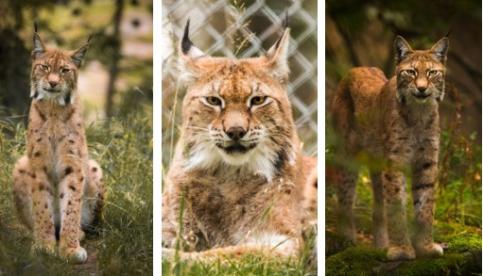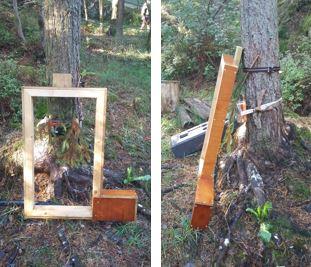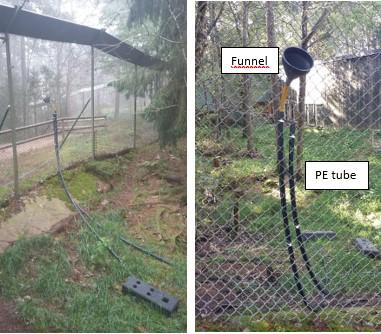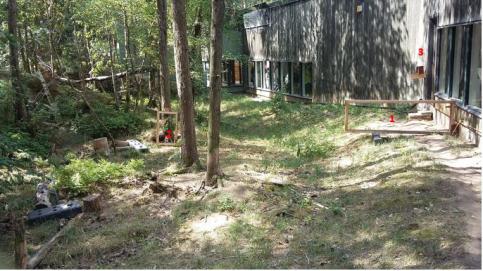Materials and Methods
Lynx
The study was performed on three adult lynxes, two males and one female, kept at the Kolmården Wildlife Park, Sweden.
The lynxes were housed in a 2168m2 outdoor exhibit.

Olfactory enrichment

The lynxes were exposed to valerian, catnip and cinnamon as olfactory enrichment. A control treatment containing only water was also tested.
The odour treatments were applied on a branch attached to a tree in the enclosure at a place called the scent station. One odour was applied every morning, and it was replaced with another odour or control after 24 hours.
Behavioural observation were made 4 hours per day (including morning and afternoon). Each odour treatment was presented a total of 9 days over a total of 36 observation days.
Selected behaviours were recorded using one-zero sampling.
Auditory enrichment
The auditory enrichments were mouse squeals, roe deer barking, lynx vocalizations played through a speaker and live crickets placed inside a plastic tube. A control sound was also played and arranged with the ambient sound coming from the lynx enclosure . Half an hour of observations was performed in the morning and the same amount of time during the late afternoon. The behaviour was recorded during 15 min including 5 min of pre-treatment, 5 min of sound treatment and 5 min of post-treatment. This procedure was duplicated after a 15 min break (without any observation). Each sound was presented a total of 4 days resulting in 16 repetitions and 20 treatment days.
Cricket observation were performed during 20 min at any time of the day to be unpredictable. Each cricket enrichment was presented a total of 8 days resulting in 8 observations days.
Selected behaviour were recorded using continuous sampling.

Monitoring technology

The monitoring technology used was:
HDX pit tag was part of the scent station and fixed to a fur tree. This “scent” antenna was rectangular, with three wire loops. It was designed to detect 23mm long pit tags injected subcutaneously between the lynx should blades. The scent antenna was used to monitor the visits at the scent station.
One other HDX antenna was used to monitor pacing and placed perpendicular to the wall of the public display building and was considerably bigger than the “scent” antenna. Later, when the scent experiment was finished, the “scent” antenna was moved to one of the back enclosures and placed perpendicular to the fence to also measure pacing.
Bluetooth Low Energy (BLE) transmitters attached to a collar; the BLE signal was detected by smartphones placed on the exhibit fences. The smartphone was running a custom-made app (Goat Data Collect; courtesy Gustaf Hendeby, LiU). The signal strength, measured in dB re. to 1V, can be used as a proxy for distance; the detection range of the tag is ca. 50m. Using the signal strength it is possible to gauge the distance between the animal and the smartphone and determining the time of day when the animals showed interest to the scent and so monitor visits at the scent station.
Reconyx Hyperfire wildlife camera for recording the behaviour of the lynxes visiting the enrichments station around the clock and especially during the night.
Responsible for this page:
Director of undergraduate studies Biology
Last updated:
05/09/19
